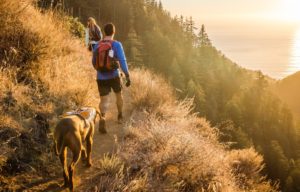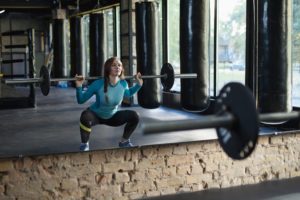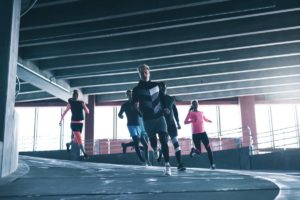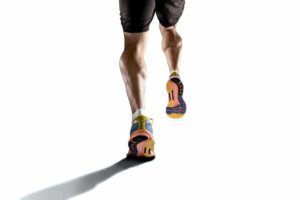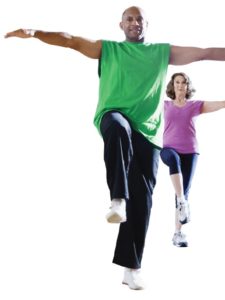Injury / Injury Prevention
The Functional Movement Screen and Active Older Clients
Study reviewed: Mitchell, U.H., et al. 2016. Performance on the Functional Movement Screen in older active adults. Journal of Sport and Health Science, 5 (1), 119–25.
Why Proper Rib-Cage Position Is Important
Proper thoracic-cage functioning sets the groundwork for healthy movement.
Does Foam Rolling Really Increase Blood Flow?
One claim about the benefits of foam rolling is that it initiates an increase in blood flow to the treated area. But do those claims hold water? A study published in The Journal of Strength & Conditioning Research (2017; 31 [4], 893–900) aimed to find out.
Activity Helps Heart Attack Sufferers Survive
No one plans to have a heart attack; however, should one occur, a new study has determined that an active lifestyle ups the likelihood of survival.
U.S. Yoga Injuries Increasing
Yoga injuries in the United States are on the rise, particularly among older adults, according to data from hospital emergency rooms nationwide. Researchers from the Center for Injury Sciences at the University of Alabama in Birmingham (UAB), Alabama, examined data from 2001 to 2014 to establish the injury risk involved in yoga participation.
How Fitness Professionals Can Avoid On-the-Job Injuries
Your body is your business; protect your investment and keep your returns flowing.
Comparing Periodization Strategies for Women
Study reviewed: Bartolomei, S., et al. 2015. Block vs. weekly undulating periodized resistance training programs in women. Journal of Strength and Conditioning Research, 29 (10), 2679—87.
If your clientele includes women looking to boost their muscular strength within a specific time frame, creating periodized weight–training programs for them is a great idea. The question is: How should you structure the program? Bartolomei and colleagues' study published in 2015 offers guidance on two possibilities.
The “New” Knee Ligament, Rediscovered
Hasn't the knee been thoroughly mapped? Perhaps. However, the following bold headline reverberated throughout the allied health community in 2013: "Doctors Identify a New Knee Ligament."
Really?
Preventing Golf Injuries
As a golfer, you want to stay injury-free to practice and compete regularly, which ultimately lets you hone your skills and elevate your performance.
To help avoid injury and boost level of play, you need to understand how two key muscle and soft-tissue systems—the posterior oblique system and the anterior oblique system—affect the golf swing.
5 Ways Pilates Can Benefit Athletic Clients
Recreational athletes have a lot to gain from adding Pilates to their training programs.
The Big Payoff to Better Posture
When I was a kid, my dad was a stickler for posture. "Sit up straight," he'd say as I slouched over a plate of pasta. Other times, he'd try a tactile approach. I'd be standing in line at the market or sitting in the bleachers watching my oldest brother play baseball, and out of nowhere I'd feel two thumbs dig gently into my upper trapezius muscles while the remaining fingers of each hand gripped my shoulders and pulled them back. All these years later, I'm the one cuing people to mind their posture.
The Physiology of Sprint Interval Training
If your clients haven't already asked you about it, they will. High-intensity interval training is a mainstay in personal training programs and group fitness classes. There are several reasons why HIIT is a good workout, one of them being its brevity. Research indicates that the four most common barriers to exercise are not having time, feeling too tired, getting enough exercise at one's job, and having no motivation to exercise (Brownson et al. 2001).
Exercise Plus Regular Movement Best for Reducing Health Risks
Over the past several years, researchers have reported on the negative impacts of extended periods of sitting on health and mortality. Some have looked at whether exercise can mitigate any of those effects. The debate continues in a recent study.
Running Improves Brain Function in Young Runners
Looking to boost brain power? You may want to lace up those sneakers and head out for a long run, suggest researchers from the University of Arizona.
While there’s been plenty of study on exercise and brain function, these UA researchers wanted to know if a movement requiring little motor-control precision—like distance running—could affect neuroplasticity, the brain’s ability to form new neural connections. Most research to date has focused on older adults, but this study targeted younger minds.
Can Running Help Inflammation in Knee Joints?
Regular running is often associated with knee problems. However, there’s one condition that researchers now believe may improve with running: inflammation.
A Minor Issue?
When you work with enough clients, eventually you notice all the variations in biomechanics and anatomy. You may or may not remember from your fitness professional certification studies that only about half of people have a psoas minor muscle. When it's there, it lies in front of the psoas major and originates from the sides of the 12th thoracic vertebra (T12), the first lumbar vertebra (L1) and the corresponding intervertebral disk (Farias et al. 2012).
What Is Plica Syndrome?
Clients sometimes experience general pain in the knee during or after an exercise session, and while it's not within your scope of practice to diagnose, a broad understanding of issues that affect this important joint can be helpful. Here's a snapshot of plica syndrome.
Plica is a fold of synovial tissue that's a "remnant" of embryologic development. The knee is initially divided into three compartments by membranes, which are then resorbed by the third or fourth month of fetal life (Scuderi et al. 1997).
Power Up to Prevent Injury
Participants rarely think about injuries until after they happen (hopefully not in your class!). But someone who needs rehabilitation may face a delay in meeting fitness goals. Another issue: Our group fitness studios are filling with people of many different ages and abilities.
7 Principles for Outstanding Boomer Workouts
Do you teach or train generally healthy, moderate- to high-functioning baby boomers? Or are you thinking of directing more of your efforts to exercisers over 50? If so, be among the first to learn targeted principles you can weave into clients' or class participants' workouts.
Whether you're a small-class leader, a one-on-one trainer or a group fitness instructor, applying seven specific principles will allow you to offer the most effective sessions for midlifers and older boomers.
Corrective Exercise for Foot, Ankle, Knee and Back Pain – Calf Stretch on BOSU
Activities such as walking, squatting or lunging require coordinated movement. The ankles must be able to bend to allow the legs to come forward over the feet, and the knees to bend when squatting or lunging. Restricted motion in an ankle can cause pain and dysfunction to any number of bodily structures as they compensate.



